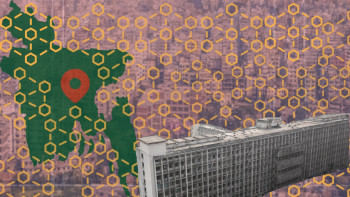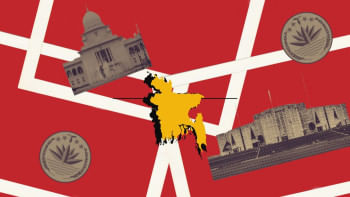Why Bangladesh needs an effective zila parishad system

In Bangladesh, the functionality of zila parishad, or district council, within the local government structure has been under question for some time. As outlined in the Local Government Ordinance, 1976, the zila parishad used to have 97 functions, divided into mandatory and optional categories. It was also tasked with coordinating the activities of local entities such as police stations, unions, and municipalities. However, the Local Government (Zila Parishad) Act, 1988 reduced the number of functions to 12 mandatories and 69 optionals. In practice, these functions have not been effectively implemented. With the advent of the upazila parishad, the rise in the number of municipalities, and the strengthening of the union parishad, the zila parishad's direct involvement in development work has diminished considerably. The challenge, therefore, now lies in reviving this parishad, not by narrowing its scope but by redefining its role and finding new areas where it can be of use.
Rather than directly implementing projects, the zila parishad can be successful if it focuses on coordination and oversight. This includes ensuring accountability, coordinating the activities of government departments, and supporting the work of upazila parishad, union parishad, and municipalities. It would be counterproductive and ultimately unfeasible to restrict these local councils' work by over-involvement from the zila parishad. For this reason, many argue that re-establishing the zila parishad as a local government institution is not the solution. However, abolishing it without proper strengthening would be a regrettable decision as well.
To transform the zila parishad into a democratic, participatory, and accountable institution, we must adopt the electoral changes suggested by the Local Government Reform Commission. At present, only elected representatives from the upazila, municipality, and union parishad within a zila vote in the zila parishad election. If a city corporation exists within a district, its elected representatives also have the right to vote. The commission's proposal suggests direct voting for zila parishad members. In this new system, upazilas will be divided into three to five wards, with larger upazilas having five. For example, in a zila with 10 upazilas, the zila parishad will have a minimum of 30 directly elected members, who will then vote to elect the chairman of the zila parishad. Only elected members will be eligible to run for the chairmanship.
The commission has also proposed that elections for all local government institutions in a given area should take place on the same day. This change aims to reduce election costs and streamline the process. Elections would be staggered across different areas of the country but held on the same day within each locality. For instance, voters would simultaneously elect members of the zila parishad, upazila parishad, and union parishad or municipality. In areas with a city corporation, voters would also select ward councillors alongside zila parishad members.
The 1997 Local Government Commission report suggested limiting zila parishad activities to just nine areas, rendering the previous system of mandatory and optional functions ineffective. Under the new reforms, the zila parishad could follow a model similar to that of the upazila parishad, with government activities categorised as transferred or reserved. The reform proposals also advocate for the creation of a comprehensive district development plan that integrates projects from local councils, government departments, and NGOs, reducing duplication and inefficiency.
The zila parishad's role would be to coordinate these plans, ensure technical support, and monitor progress. The district plan would include critical infrastructure projects such as the construction and maintenance of inter-upazila roads, educational buildings, and water control structures, ensuring their proper implementation. The zila parishad would also supervise the functioning of secondary schools and colleges within its jurisdiction, establish governance councils in educational institutions, and improve quality control in public health services.
The zila parishad should also review law and order in the region, working with the police to address security concerns. It would contribute to the creation of a conducive environment for industrial and commercial growth, while fostering development in education, culture, and sports. Furthermore, the zila parishad would monitor the work of various government ministries at the district level, providing feedback and suggesting improvements where necessary.
The revenue and service budgets for all transferred departments should be incorporated into the zila parishad's fund. With the collaboration of relevant departments, the zila parishad would draw up a comprehensive development plan that aligns with the available budget. This would offer a transparent overview of government spending at the district level, ensuring better financial management and accountability. Officials from various ministries would continue to serve under their respective departments, but their work would be coordinated under the zila parishad's direction. The chairman would be responsible for preparing the annual activity report of all heads of departments.
Additionally, while other departments may continue operating under their own ministries, they must submit their plans and projects to the zila parishad, ensuring these align with the broader district development strategy. The zila parishad would be tasked with reviewing the feasibility, quality, and progress of these projects, as well as coordinating inter-agency efforts.
To ensure efficient coordination and planning, the zila parishad would establish a dedicated planning unit. This unit, headed by the chief executive of the zila parishad, would consist of the district planner, the district statistical officer, and representatives from the Ministry of Planning and the Department of Implementation, Monitoring, and Evaluation. Officers from these departments would be deputed to the district level to strengthen the unit's capacity.
While not all functions can be transferred to the zila parishad, those that remain under the control of the government would be classified as reserved subjects. However, the government will formulate a general rule for coordinating development plans, reviewing activities, and other matters related to the reserved subjects. Under this rule, the district-level officers for all reserved subjects will coordinate their activities with the zila parishad. The full management of the government departments transferred to the zila parishad will be vested in the zila parishad.
Political will is essential to implement the reform proposals put forward by the Local Government Reform Commission. By modifying the electoral system, planning, and functioning of the zila parishads, we can aspire to create a truly democratic, effective, and accountable local government system in Bangladesh.
Dr Mohammad Tarikul Islam is professor at the Department of Government and Politics, Jahangirnagar University. He is a member of the Local Government Reform Commission.
Views expressed in this article are the author's own.
Follow The Daily Star Opinion on Facebook for the latest opinions, commentaries and analyses by experts and professionals. To contribute your article or letter to The Daily Star Opinion, see our guidelines for submission.

 For all latest news, follow The Daily Star's Google News channel.
For all latest news, follow The Daily Star's Google News channel. 





Comments